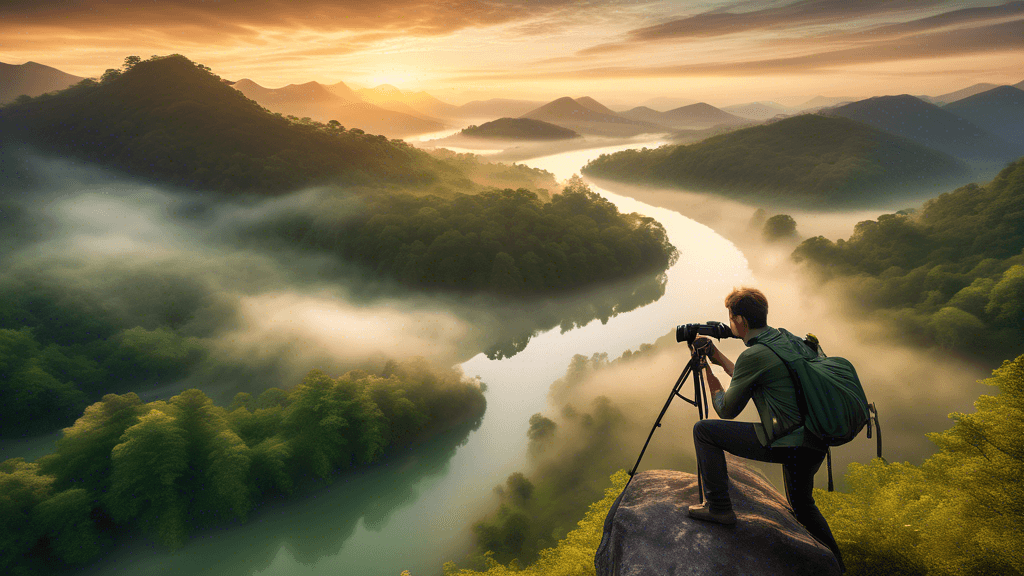
Capturing Conservation: Using Landscape Photography to Advocate for Nature
Share
The Power of Landscape Photography in Environmental Conservation
Landscape photography transcends merely taking pictures of panoramic sceneries; it has evolved into a potent tool for environmental advocacy. By capturing the beauty and the vulnerabilities of our natural surroundings, photographers play an integral role in driving conversations about conservation. But how exactly does landscape photography influence conservation efforts, and why is it so critical in our quest to protect the earth’s natural assets?
The Role of Landscape Photography in Conservation Awareness
Landscape photographers are often seen as artists, but in the context of environmental conservation, they can also be considered as documentarians and educators. Their images bring far-off, often inaccessible locations right before the eyes of the global public, showcasing both the splendor and the plight of these areas. This visual documentation not only raises awareness but also stirs the conscience of viewers, nudging them towards a greater appreciation and subsequent action for preserving these landscapes.
Consider the influence of iconic photographs like those of Ansel Adams, whose striking images of Yosemite National Park helped establish it as a significant national treasure in the United States, ultimately influencing national policy towards more robust conservation efforts.
Photography as a Tool for Change
Through the lens of a camera, photographers have the unique ability to highlight environmental issues in a visceral and compelling way. This section highlights how photography serves as a medium for storytelling that can influence public opinion and policy:
- Evidence of Environmental Change: Photographs can serve as historical evidence of environmental degradation, such as deforestation, melting glaciers, or wildlife decline. This type of imagery can be a powerful tool to support environmental campaigns and advocate for policy changes.
- Inspiring Action: Captivating imagery has the power to inspire people to take action. Whether it's changing personal habits, participating in local conservation efforts, or supporting international environmental causes, visuals stir the emotional connection that drives action.
- Educational Outreach: Educators increasingly use landscape photographs to engage students and the public about environmental science and the necessity of sustainable practices. These photographs can turn abstract concepts into tangible understanding.
Photographs open doors into the past, but they also allow a look into the future, observed the celebrated photographer Sally Mann. Such is the profound impact of photography on environmental conservation; it not only captures moments in time but also propels us towards a more sustainable future.
Challenges and Ethical Considerations
While landscape photography can be a formidable ally in conservation, photographers must navigate ethical considerations to ensure their work supports the cause without causing harm. Disturbance to wildlife, destruction of habitats for the 'perfect shot', and contributing to human traffic in sensitive areas are some of the ethical dilemmas photographers might face.
To mitigate these challenges, many conservation photographers follow strict guidelines to minimize environmental impact and engage in responsible photography. They often work closely with conservationists to understand and adhere to best practices that respect wildlife and natural habitats, ultimately ensuring that their work promotes conservation without detrimental impacts.
Connecting Through the Camera Lens
Landscape photography is not just an art form; it is a call to action. As we continue to confront environmental challenges, these visual stories remind us of what is at stake and inspire us to commit to conservation. More than ever, there is a critical need for photographers who can skillfully capture the essence of our environment and convey a message that resonates with and mobilizes audiences.
Are you ready to be a part of this visual movement for nature? Whether you are a photographer looking to focus on conservation or an admirer of the art, your engagement and advocacy can contribute to meaningful change. Let us commit to being responsible stewards of our beautiful but fragile planet. Grab your camera, capture the beauty, tell the story, and advocate for the earth!





